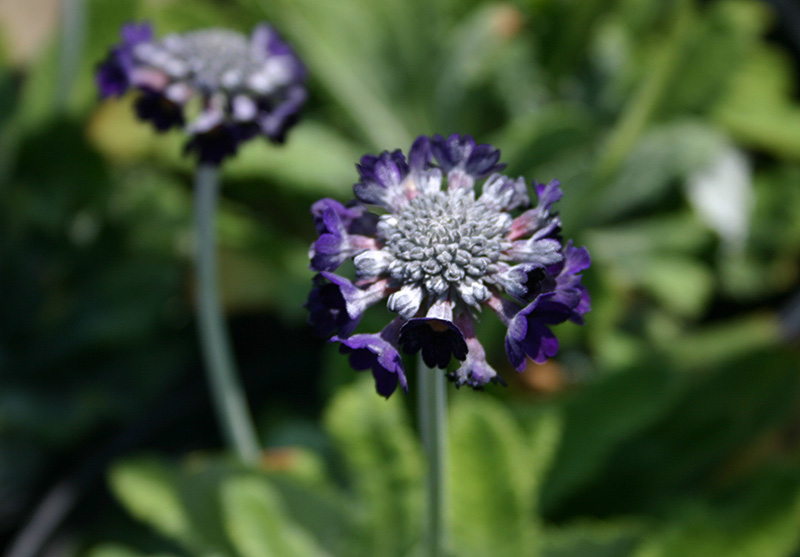Plant Finder
Drumstick Primrose*
Primula capitata 'Salvana'
* This is a "special order" plant - contact store for details
Height: 9 inches
Spacing: 6 inches
Sunlight:
![]()
![]()
Hardiness Zone: 4a
Other Names: Cowslip, Polyanthus
Description:
The vivid purple flowers of this tiny gem are borne in pincushion clusters resembling drumsticks that rise tall above the tight rosette of powdery grey-green foliage; ideal for moist rock and shade gardens
Ornamental Features
Drumstick Primrose features delicate purple pincushion flowers with yellow eyes at the ends of the stems from late spring to early summer, which emerge from distinctive lavender flower buds. The flowers are excellent for cutting. Its small serrated oval leaves remain grayish green in color throughout the season. The silver stems can be quite attractive.
Landscape Attributes
Drumstick Primrose is an herbaceous perennial with tall flower stalks held atop a low mound of foliage. It brings an extremely fine and delicate texture to the garden composition and should be used to full effect.
This plant will require occasional maintenance and upkeep, and should be cut back in late fall in preparation for winter. Gardeners should be aware of the following characteristic(s) that may warrant special consideration;
- Self-Seeding
Drumstick Primrose is recommended for the following landscape applications;
- Mass Planting
- General Garden Use
- Bog Gardens
Planting & Growing
Drumstick Primrose will grow to be about 7 inches tall at maturity, with a spread of 8 inches. When grown in masses or used as a bedding plant, individual plants should be spaced approximately 6 inches apart. Its foliage tends to remain low and dense right to the ground. It grows at a fast rate, and under ideal conditions can be expected to live for approximately 5 years. As an herbaceous perennial, this plant will usually die back to the crown each winter, and will regrow from the base each spring. Be careful not to disturb the crown in late winter when it may not be readily seen!
This plant does best in full sun to partial shade. It prefers to grow in moist to wet soil, and will even tolerate some standing water. It is not particular as to soil pH, but grows best in rich soils. It is somewhat tolerant of urban pollution, and will benefit from being planted in a relatively sheltered location. Consider covering it with a thick layer of mulch in winter to protect it in exposed locations or colder microclimates. This is a selected variety of a species not originally from North America.
* This is a "special order" plant - contact store for details
